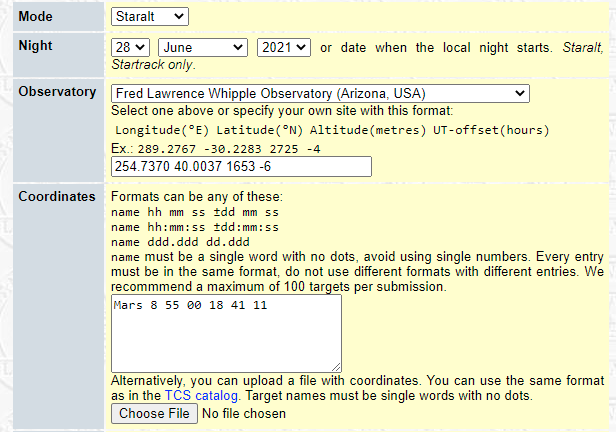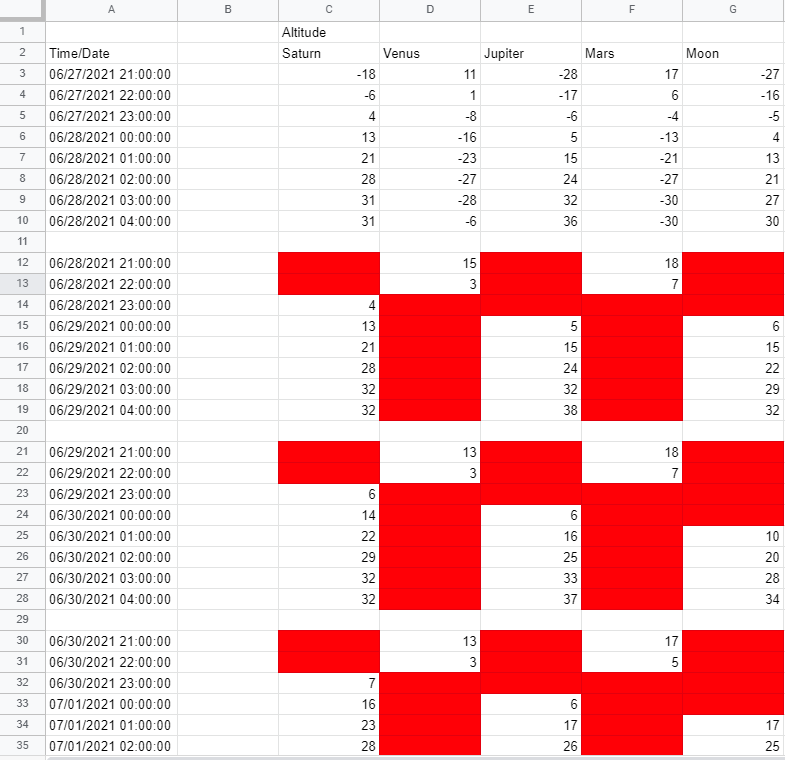Hi everyone! Cutler, here again, to share the latest news on my astrophysics internship at CU Boulder. For those who don’t know, I plan on running the largest telescope at the Sommers-Bausch Observatory at CU Boulder. This week was quite unorthodox, especially for the Pinhead Internship Programs, due to the fact that this week I came home back to Ridgway, Colorado. This past Monday, my mentor Dmitry and I, met to discuss our plans as we get closer to actually getting the telescope up and running. He decided that I should create a spreadsheet containing the many deep-sky objects that I will be taking photos of and organize all of them to look at when they would actually be above the horizon and would be able to be seen.
I had to come home this week because I needed to get my car from Montrose that way I would be able to use my car to drive back from the observatory when I am done taking photos at night. It is most likely as of now that I will be running it every weeknight from 9 PM – 4 AM. A car will aid in me getting to my apartment quicker in the morning along with a lot of caffeine. This will destroy my sleep schedule but I could not be more excited about it! I am specifically using two programs this week to create the spreadsheet of the deep sky objects; Stellarium and a website called Catserver that is made by the Issac Newton Group of Telescopes. My goal is to correctly write the altitudes of the deep sky objects in the night sky from every night from June 28th – August 15th. The altitude of an object in the night sky is the number of degrees it is angled above the horizon in the night sky. For example, Saturn had an altitude of 28 degrees at midnight on the 29th of June. It is necessary that we find the altitudes of these planets and objects in the night sky so that we know what the telescope in the observatory will actually be able to see and when and where it should be pointing when the objects are visible.
To find the altitude of an object in the night sky, I can search the object in Stellarium after setting it to the right coordinates of the observatory and the right altitude. Once I go to the correct hour of the night, I am able to copy a number from Stellarium to my spreadsheet. However there is one large issue with this method, it takes forever. This is because I have to measure the altitude from 9 PM-4 AM for many objects and in Stellarium, I can only measure one altitude of one object at one specific time in the night.
This is where the Cat server website comes in to make my workflow much more efficient. The Catserver website allows me to enter in multiple objects coordinates in the sky, and then graph their altitudes over the course of an entire night. So now with this program, I can look at many objects altitudes’, over the course of the whole night compared to one object in one particular hour.
Pictured above is the Catserver website, where I have to enter the longitude and latitude of the observatory to get the correct altitudes of the objects in the night sky. Pictured on the left is part of the spreadsheet I created, with the red “cells” meaning the object is a negative altitude or under the horizon. This week I was able to visit my family and friends because I had to come back to Ridgway to get my car, I originally thought I would spend the Fourth of July alone, but I spent it in Ouray watching firefighters fight with a firehose and the beautiful fireworks above the south side of Ouray! That’s all for this week, see you next!




Way above my head! Way to solve the problem!